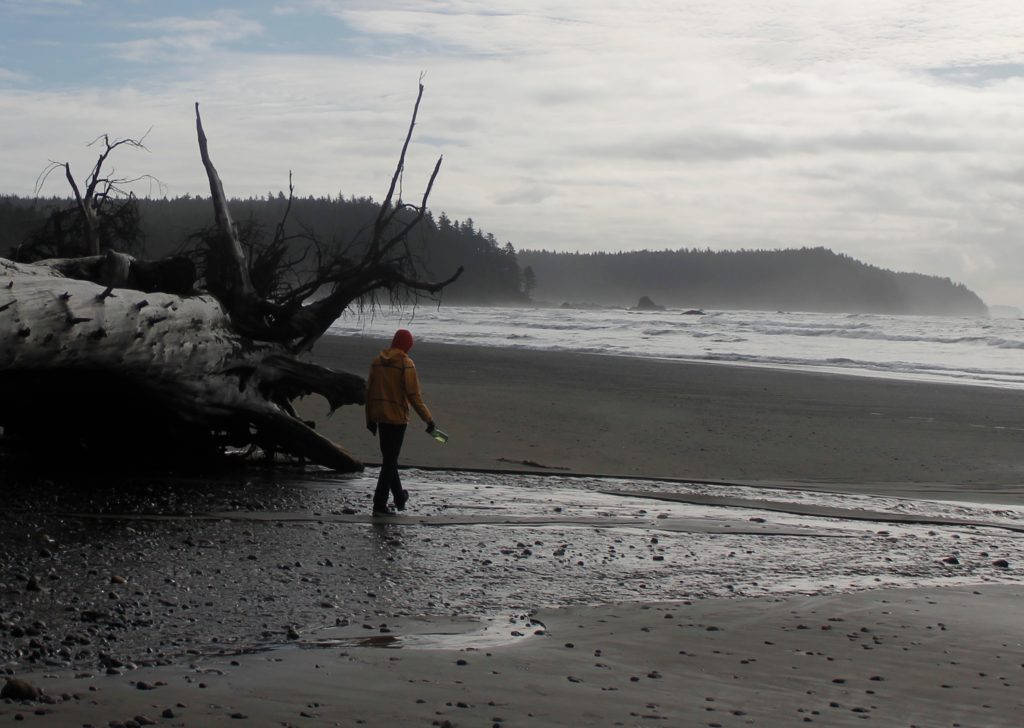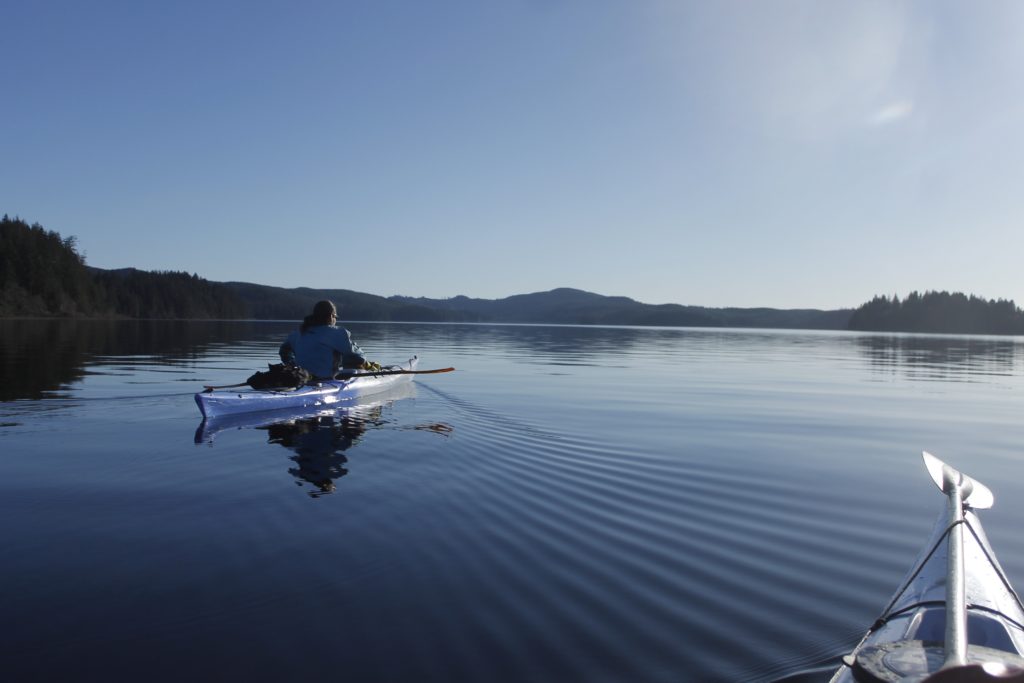
Some January day.
Jarrett and I stood amidst gear and kayaks on the shores of Lake Ozette — the biggest lake in Olympic National Park, at the north-westernmost corner of Washington, about to launch an overnight trip.
And lo! The sun was hot on my arms. Insects were flitting about. I felt, maybe a little bit silly, that I had brought the drysuit, neoprene sprayskirt, various and sundry items of hardcore cold water adventure.
This was warmer than half of the trips we had guided this summer.
“I can’t believe I went skiing yesterday,” I said.
The chest deep powder at Hurricane Ridge was a couple hours drive away, but was worlds removed from this all-too-pleasant lake front. The water was glass.
Jarrett wanted to know if I had brought sunscreen. I hadn’t. Psychologically, I’d been preparing for wind-whipped waves and sleety rain, not the possibility of a tan.
Jarrett slipped into his drysuit so that he could comfortably launch his kayak in the cold water. I was no mood to steam cook myself in Gore-Tex, and opted for shorts and a thin synthetic layer beneath my life vest.
No one said “Climate Change,” but on such an aberrant day, how could you not think about the warming planet and the new realities that it will impose upon our lives.
January might yet become the best season for kayaks.
And it will be just as well, because at least there will be something to do as skiable snow goes the way of the dodo.
Note to up and coming outdoor business owners: Maybe it’s time to start phasing out the skis. Kayaks will have the edge soon enough.
The snow will just keep shrinking up the mountains. Meanwhile, exciting new waterways are going to open up in low-lying places like Florida, Louisiana and New York City. Sure, the water may be a sludge of sewage, decay and industrial effluvia, but as long as the pH doesn’t get low enough to melt boats, you will probably still be able to float over it.
Think about the windfalls awaiting the entrepreneur who sets up the first guided kayak tour through Lower Manhattan.
“And this is the old New York Stock Exchange, where the short-term greed and willful ignorance of investors, abetted by a complicit government, helped bring the Great Flood. Hey, who wants to hit the snack raft for a New York pretzel?”
No one else had gotten the memo about the perfect weather it seems, because there were no other boats that we could see, no other vehicles at the boat launch into Swan Bay.
Jarrett launched first onto the smooth blue water. I made a couple adjustments to my gear and paddled after him. Within a couple minutes, I caught up to him. He had gravitated to a small shady spot behind some trees, where he’d have relief from the sun.
“You see that?” He gestured lazily.
A bald eagle perched in the branches above, scanning the water with its watchful eyes. It would be the first of many eagles we saw on the trip.
“I’m glad you got us out here,” I said.
The trip idea started less than 24-hours ago, when I’d called Jarrett to ask if he’d wanted to hit the water for a day. He was watching football, and said he’d call me back. When my phone rang again, I half-expected to hear that he’d be busy.
“You want to do an overnight on Lake Ozette?”
“Tomorrow?” I asked.
“Yeah.”
“Hell yeah!”
Lake Ozette had been on his to-do-list for a while, partly because you can combine the paddle with a two-mile hike over to a remote beach on the Pacific Ocean. I was stoked to some kind of combination adventure. Moreover, I had a strong itch to get out of town for some time away from the hellish news cycle and a fuzz of wintertime blues.
On the road, the dark clouds around Port Angeles began to melt off. Within 45 minutes, there were blue skies overhead. Highway 112 took a serpentine route along the Strait of Juan de Fuca through a series of hairpin turns and jackknife hills. The mountains of Vancouver Island to our north glimmered with sunlit snow.
“Whooo! That’s beautiful.”
“I can’t believe this weather.”
“Awesome!”
Led Zeppelin on the stereo was the perfect compliment to our buoyant spirits.
“It’s been a long time, been a long time, been a long time!”
Indeed. I hadn’t been in a kayak since November.
The highway would continue out toward Neah Bay and Cape Flattery, on the northwestern-most tip of the continental U.S.
Before we reached this juncture, we hung a left onto a little-traveled backroad. Trees, thick with moss lolled over silty creeks. It was life-on-life, Washington’s bayou country.
Boxy metal gates blocked gravel roads that accessed logged out hillsides. We entered the National Park a couple hundred yards away from the boat launch.
Only half the lake shore is public land, and several logging cuts are visible from the water. I was grateful for the sparse number of houses.
The still water and the lack of people made it possible to perceive subtle cues from the environment.
As Jarrett and I paddled out of Swan Bay into the broader lake, we heard the distant sound of breaking waves. It was the Pacific Ocean — close to two miles off the west shore, but sounding close enough to be just over the next rise. The tumult of countless breakers blended into a white blanket of shushing, thundering agitation as thousand-mile swells threw themselves against the continent.
What a contrast to the miles of stillness we saw before our bows. A loon cried out from somewhere.
“Man! I am sweltering inside this drysuit.” Jarrett announced.
“That’s funny. I feel just about perfect right now,” I said. “This shirt and shorts are breathing great.”
“Have you felt the water yet?” Jarrett asked. I dipped my hand in, and it was icy.
“If someone were to tip you over right now, you’d wish you were in a drysuit.”
I made no further comment and gave Jarrett’s boat plenty of room.

We steered around Garden Island and Preacher’s Point. Many of the names on the map recalled the Scandinavian settlers who lived here in the 19th century. Often they paddled boats made by the nearby Makah tribe. Excavations have recovered human habitation in the area going back 2,000 years.*
No sign of those past inhabitants now as we paddled our plastic boats over the still water. We set our sites on Tivoli island, a couple miles down the way, where we thought we might camp. Sure enough, there was a well established site on the north end of the island with firewood lying on shore.
We paddled a quick loop around to the island’s south side to see if there were any spots that still had the sun, but no dice. Jarrett was down to see about sites on Baby Island, about a mile off, but I felt like we had a pretty good thing on Tivoli and voted that we start getting things set up sooner rather than later.
A dim realization had begun to rattle my confidence, as I thought about what I had (and hadn’t) packed.
I took out my dry bags and the bear canister. There was my stove. Ah, but where was the fuel? I remembered that I decided to take the fuel canister out of the can to save space and pack it elsewhere. Unfortunately, I’d failed to follow through on that last important detail.
“So how do you feel about a cook fire tonight?” I asked.
“Sure, but we can just use your stove,” Jarrett said.
“Well, you see what happened was…”
Jarrett might have been a bit annoyed, because I’d told him he didn’t need to bring his stove. Nope, Tom had it covered.
“Good thing we aren’t in the mountains,” Jarrett muttered. “You said you were going to bring your stove.”
I lamely pointed out that I had brought the stove; it was the fuel that I’d left in the car.
“No sweat. I’ll get a fire going no problem,” I said. I knew it was going to be a pain in the ass getting that fire started.
Sure there was wood everywhere, but most of it was damp. The grim reality I’ve encountered is that campfires on the Olympic Peninsula require generous amounts existential struggle and smoke inhalation.
I started by cutting up sections of logs and shaving wet bark from dead twigs with my knife. After 45 minutes of gathering, I had sorted out various-sized piles of wood and arranged a cross-hatched nest of tiny twigs for kindling. Everything looked nice and boy scout-worthy. Now, the fun part.
I brought out one of my cotton balls soaked in petroleum jelly, ignited it with flint and steel, and used a stick to nudge it below my twig pile. Orange flame leapt up promisingly. The twigs were burning! The flames climbed higher, and I realized that the twigs were already almost all burned over now. Not what I wanted.
I threw more tiny twigs onto the pile, trying to get them over the fading licks of flame before they went out. More tiny twigs. I started blowing desperately. Smoke was everywhere. I put my face to the ground to inhale from the puddle of clean air and rose back to the dying blaze for fire CPR. The twigs began burning again, and I tried to get some thicker, longer-burning twigs on the scene. They wouldn’t light of course.
My reputation was on the line and I was not going to let cold dinner be on me.
] I teased more tiny twigs into place. Tentative progress. Breathed the smoke. Cursed the fire. Blew more. Cheered as the the flames climbed up again. Tiny twigs. I cursed the fire, as it seems to change its mind. Blew on the fire. Applied bigger twigs.
As soon as I had flames that lasted more than 20 seconds, I grabbed a pot full of water and held it over the blaze.
“Or we could just use my stove,” Jarrett offered.
“You brought your stove?” I practically exploded.
“I thought I’d mentioned that.”
“Well, now that I’ve got this going, we’re damn well cooking over this fire.”
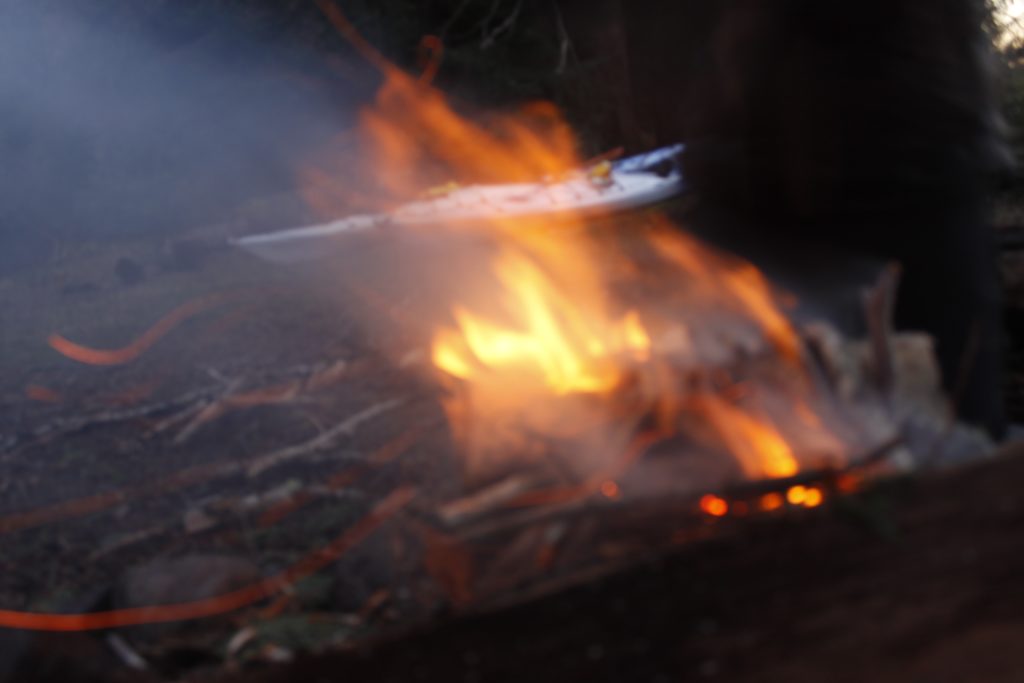
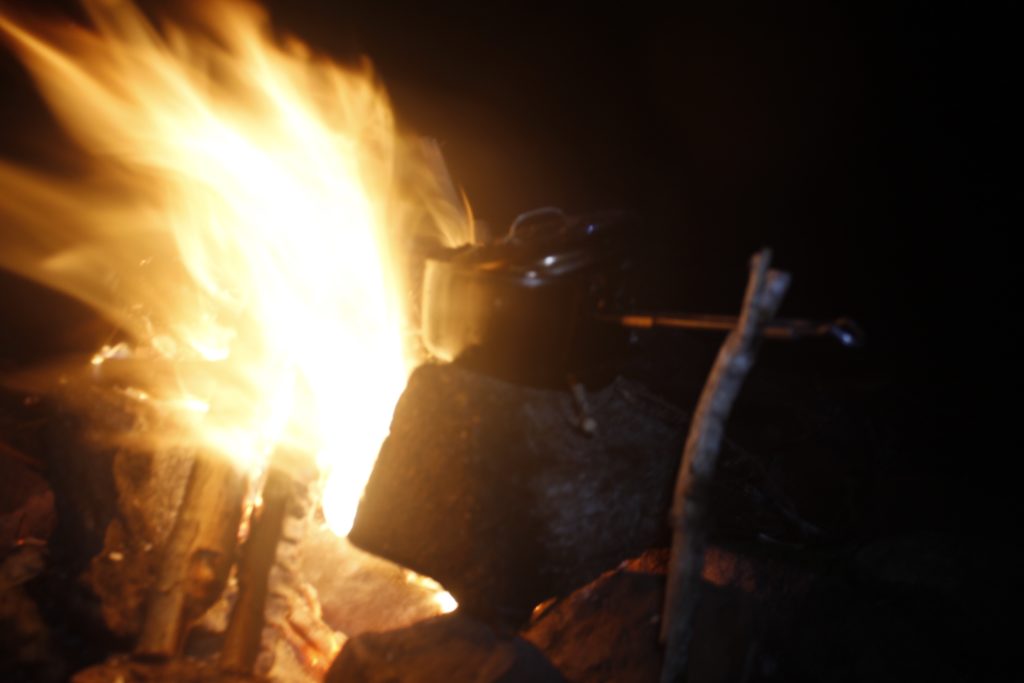
Because the bear can (mandated by the Park Service) only made room for my smallest pot, the meal was multiple courses, including pasta with bouillon cubes, an instant cup of pad thai, and some Spanish rice — with parsley garnish, fattened by the small canister of oil I’d brought along.
Jarrett took over fire duties, transforming my humble cook fire into a hearty camp blaze.
Venus flashed onto the scene first, leading the charge of the starlight brigade. Stars upon stars popped into existence above our fire — little sparks, the fine dusting of cosmic flame traced across the firmament.
The lake caught them, showed the sky its reflection. Even that still, dark water could not master the subtleties of heavenly detail. And I suppose it is the same with us, whether we aim our camera lenses skyward or try to encapsulate profundities with language. The thing itself, the present moment, holds the richest detail.
Earlier, I had watched the shifting gradients of color on the lake as the sun went down. Green blue in the west marched, seamless to the deep dark blues on the eastern shores. Wavelets crisscrossed themselves at the corner of the island, came to shore in the shape of diamonds. Gravel had moved away from this little place of interference and left a corridor of bare sand.
These and many other tiny aspects of the dynamic scene in front of me, danced inside my mind, which suddenly seemed a much bigger place than the night before, when I had been reading articles off a computer screen. The world seemed vaster and more full of possibilities.
And yet, the sunlight would banish the celestial tableaux from the lake’s surface. The delightful feeling that I had stepped closer to reality would also fade. It was an appreciation that required repetition, like Sunday Mass. If one can only fully appreciate the stars while under them, it is important to maximize that time.
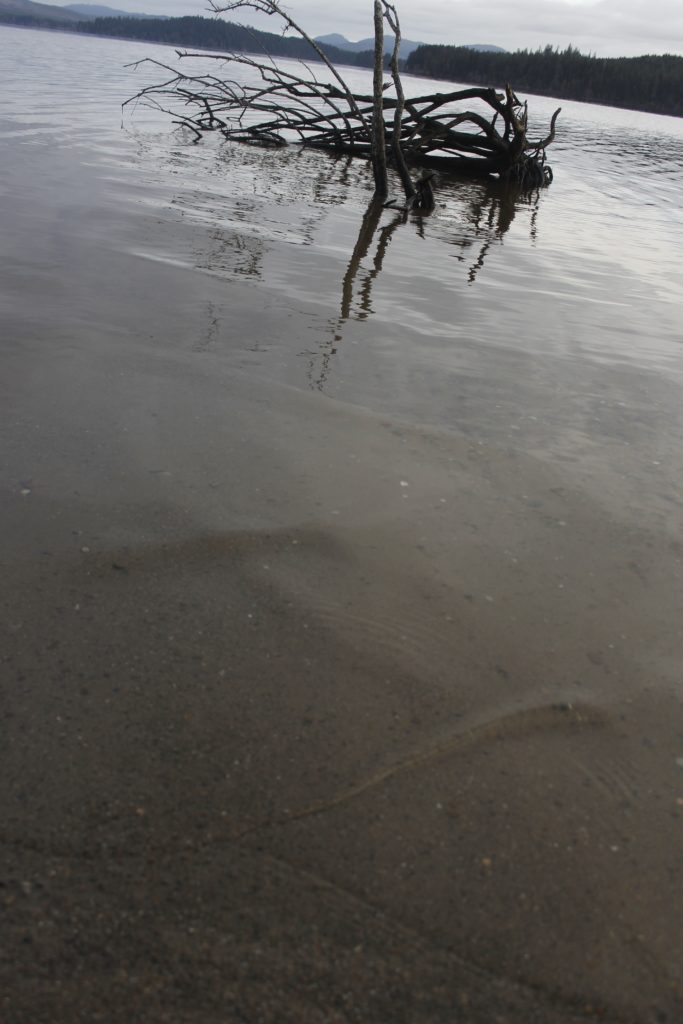

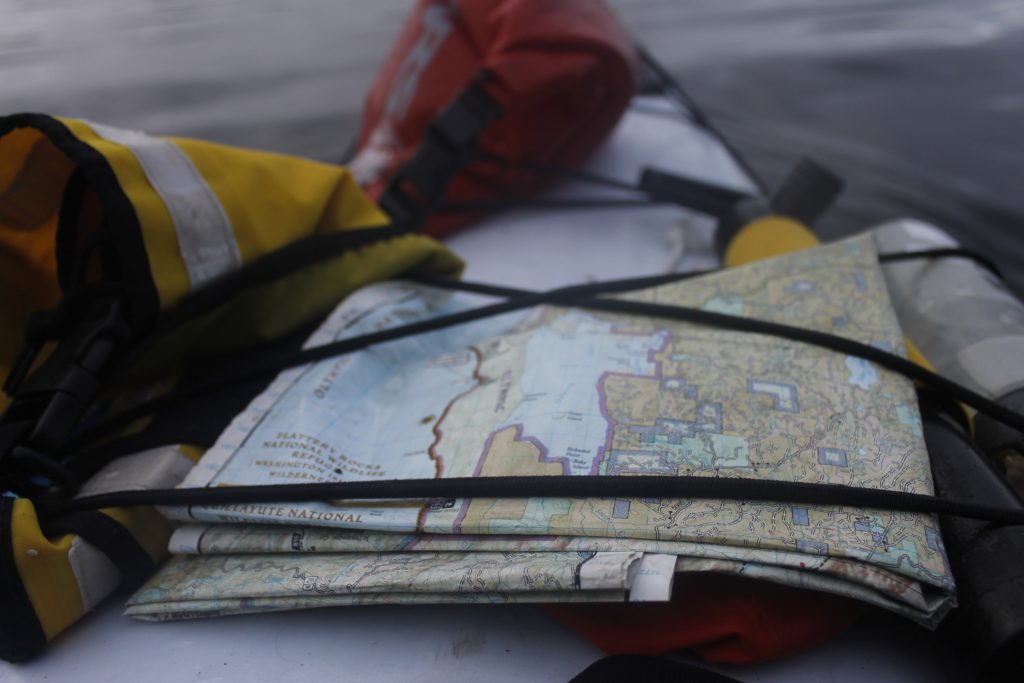
Morning came with cloudy skies. It wasn’t raining, fortunately.
I went out to get the bear can holding our food. You wouldn’t expect the bears to be out in January, but I learned later that the bears on the part of the Peninsula didn’t really hibernate, because it never got deep cold. A local at a diner explained that the island had been visited by forest creatures. During calving season, local deer would swim out there to give birth, hoping to escape predators. But at least one bruin had gotten wise. The man had seen it swimming out there — probably with a hankering for some tender venison.
Sure enough, there were fresh deer tracks along the shore, but no sign, fortunately, of bears.
We made oatmeal with Jarrett’s stove, packed down the tent, loaded our boats and hit the water.
There was a strait shot across the water to where we would find our trail to the Pacific. Jarrett suggested we cut in a little sooner so we could paddle up the shore. In doing so, we saw what was easily a dozen bald eagles.
They perched in the branches of pines looking at the water. A couple of them took off as we got closer. Several were juveniles, lacking the distinctive bald head and white tail feathers and flashing white and brown beneath their wings. I thought back to January paddles with my dad and others on the Connecticut River, another place that draws eagles in wintertime.
Other signs of animal life included beaver-chewed branches along shore.
A sudden scurrying in the branches caught my attention. A small dark creature was running down the tree.
“Jarrett!” I hissed. “Come here and see this!”
By the time he had paddled up, the creature had vanished.
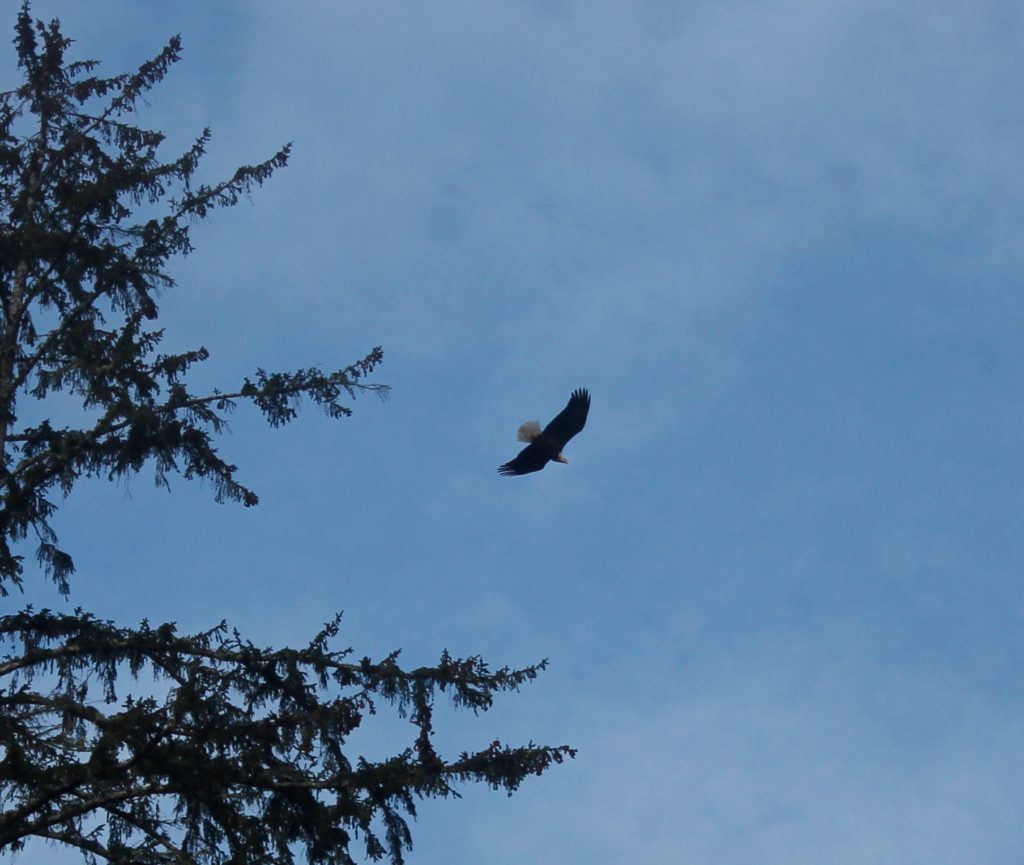

“It must have been a fisher cat,” I said. There has been a Park reintroduction program for these cagey weasel creatures, once hunted out of the Olympic Range. They are not something you spot often, and in fact, this was the second fisher, I’d seen in my life. The first time was in high school when I was running through the woods in Connecticut.
After I found out what a fisher was, I developed a respect for the little scrappers. They are tough, and will even go after porcupines.
Later, it occurred to me that I might have seen a bear cub, not a fisher. Still, the agility of the creature stuck out in my mind, and it may have been small for a bear cub this time of year. I believe that it was a fisher I saw in that tree.
The trailhead we wanted was in Ericson’s bay at the northwest corner of the lake. A small orange marker showed us where to park our boats.
We traded life vests and neoprene booties for sneakers and rain jackets. The rainforest trail was closed in by sword fern and salal shrub. A line of rotting boards offered a place to walk over the mud and soaking moss. The slick wood was as treacherous as black ice. We pushed our way through the salal, over and under fallen trees, put our feet through the oozing ground. Hemlocks, firs and giant cedars closed in above our heads.
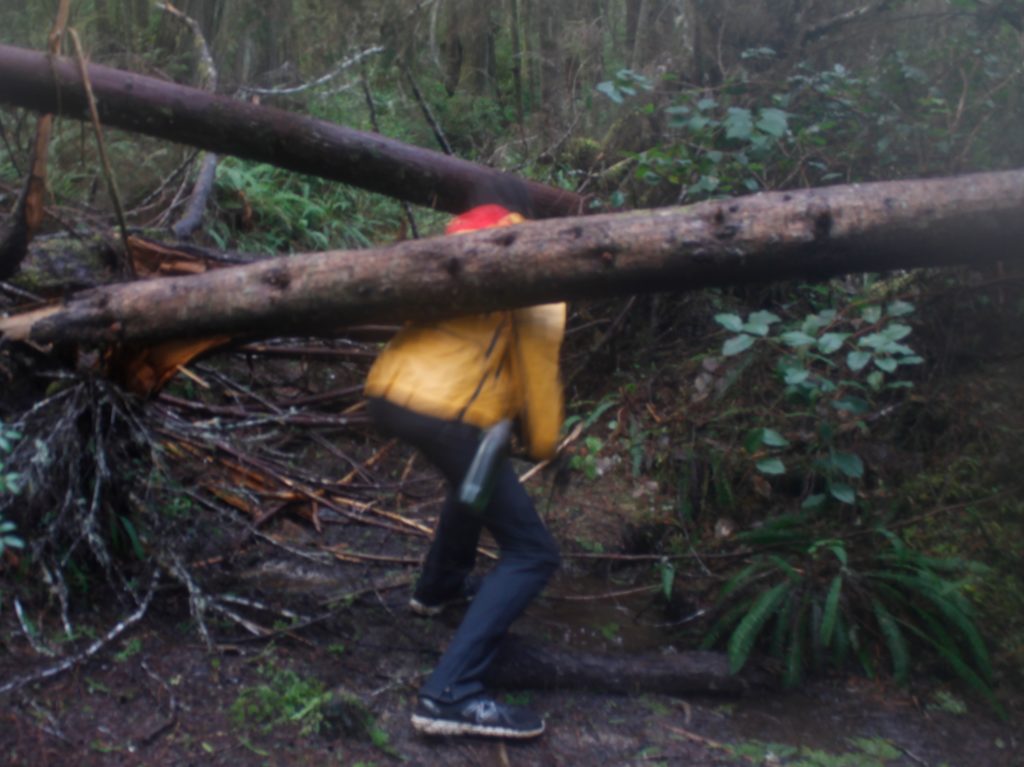

An hour of tromping gave way to an opening where we could see the gray waves of the Pacific.
Miles of lonely beach stretched to our north and south. Rock escarpments rose up in the distance. There was only one other hiker on the beach. He probably came in from a different trail and was far off anyhow. Another eagle cut through the sky overhead.
We ate a light lunch on a log. I went to mess around at the edge of the foamy waves.
There were so many patterns from nature here, including the lines of the waves, pods of bubbles, the arrangement of the small rocks along the sand, and the lines and dips that that the water carved around them.
There were also abandoned buoys, tangles of nylon rope, netting, globs of shattered styrofoam blown out over the sand, countless empty bottles. Here was one of the most remote beaches in the lower United States, and yet it too was part of our trash-heap ecosystem. As Jarrett pointed out, the remoteness of the beach also meant that it didn’t have the parks and recreation department, the local volunteers and other do-gooders who would clean up the refined sands in front of a block of beach hotels.

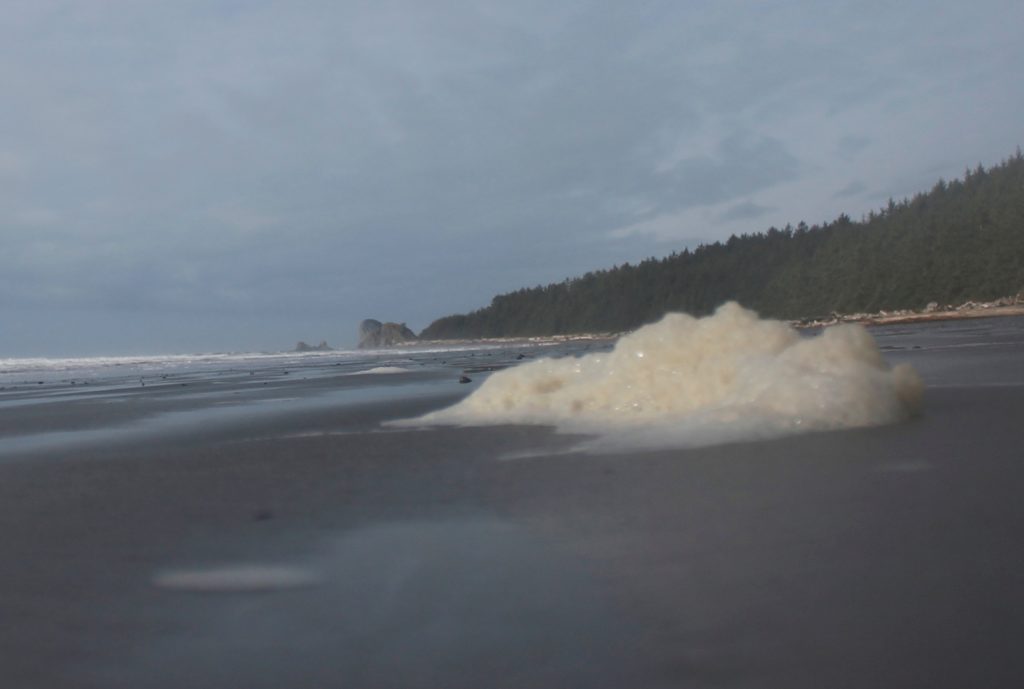
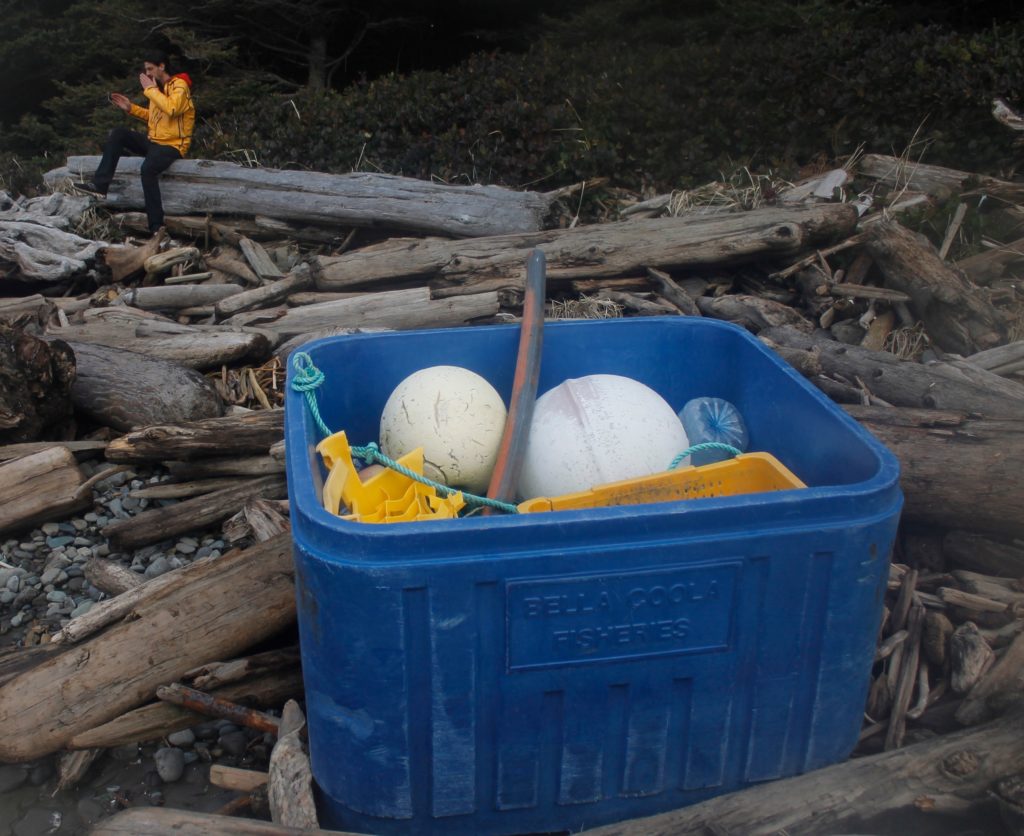
The lot of this did detract from the wild beauty of the beach, but fortunately, there had been plenty of wild beauty to start with. As in the night before, I had the opportunity to bask in the wonder of a vast and natural place.
We left the beach, having not explored much of it and I was fine with that.
If left some time to explore some other islands and camp spots along the lake for the next time.
Though, really, sometimes you don’t know if there will be a next time. I don’t mean that in the apocalyptic, kayaking down Wall Street sense — though I am severely concerned about the health of our planet — but mainly in terms of the ups and downs of our lives: the sickness, the health, long workweeks and yes, the reality that life is a fragile thing, easy to snuff out.
To Jarrett, who has had some close calls in his day, getting out on the water or into the mountains affirms that he is doing it right. Time outdoors is an invaluable facet of a life that also involves work he takes pride in and a committed relationship.
Keep hitting high notes, and it will be more likely that you will end on one.
It’s something I’d do well to remember.
* https://www.nps.gov/olym/planyourvisit/loader.cfm?csModule=security/getfile&PageID=96997
